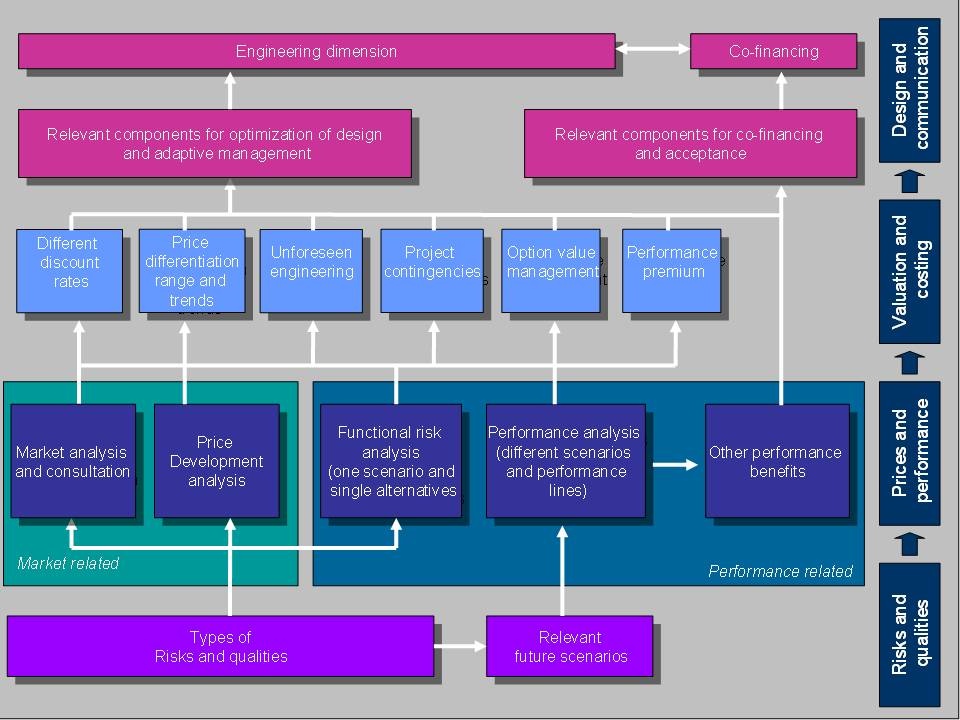About
Costing addresses various components, such as costs related to the implementation. But also costs for subsequent maintenance and operation, usually over the functional life-cycle. In the Netherlands, as in many other countries, costing is done according to formal formats, to ensure that all relevant cost-components are addressed and the same discount rates are used. Uncertainties find their way into the cost-estimates, usually on the basis of a risk assessment procedure.
Valuation and costing of uncertainties and specific BwN qualities will identify the project components with major repercussions on:
- project financing – because they represent major investment costs, operation and maintenance challenges, or cost-uncertainties;
- potential benefits and avoided costs for other than the primary functions.
This way, needs and opportunities for project optimisation and possibilities for co-financing become apparent. A more recent development is the use of total life cycle costs, which enables comparing project alternatives over a longer time frame with a focus on functional performance.
Building with Nature interest
Costing and valuation are important in all project phases. As they may put alternative solutions into a financial perspective, it is already relevant in the project initiation phase. Later it may help decision-making and securing co-financing. Examples of cases in which considering uncertainties and long-term life cycle costing is relevant are:
- Coastal engineering works and coastal management strategies that involve substantial sand nourishment volumes, long-term uncertainties related to morphological developments and phasing options.
- Flood protection strategies involving choices between soft and hard engineering, for example in situations with a considerable bandwidth of (e.g climate-induced) long-term design conditions.
- Engineering projects that yield benefits that natural systems may also provide, such as buffering of peak flows, or contaminant filtering.
Although the Dutch standards for costing (SSK) offer a comprehensive framework, some aspects that are important in BwN-type projects merit more attention. To mention the most important ones:
- Important strategic considerations such as resilience, robustness, flexibility and sustainability can be made more explicit in monetary terms.
- The effects of hydraulic engineering structures are often complex and affect many ecosystem functions, with consequences for ecosystem-dependent uses such as fisheries and recreation. Most of these effects are addressed in Environmental Impact Assessments for instance, but their valuation is often lacking, just like their integration in the design process.
- Uncertainties related to external factors, such as climate change, are difficult to predict while uncertainties in ecosystem relations are not well understood.
- The full potential of using costs as a design criterion is not utilised, as costing is insufficiently included in the design process.

